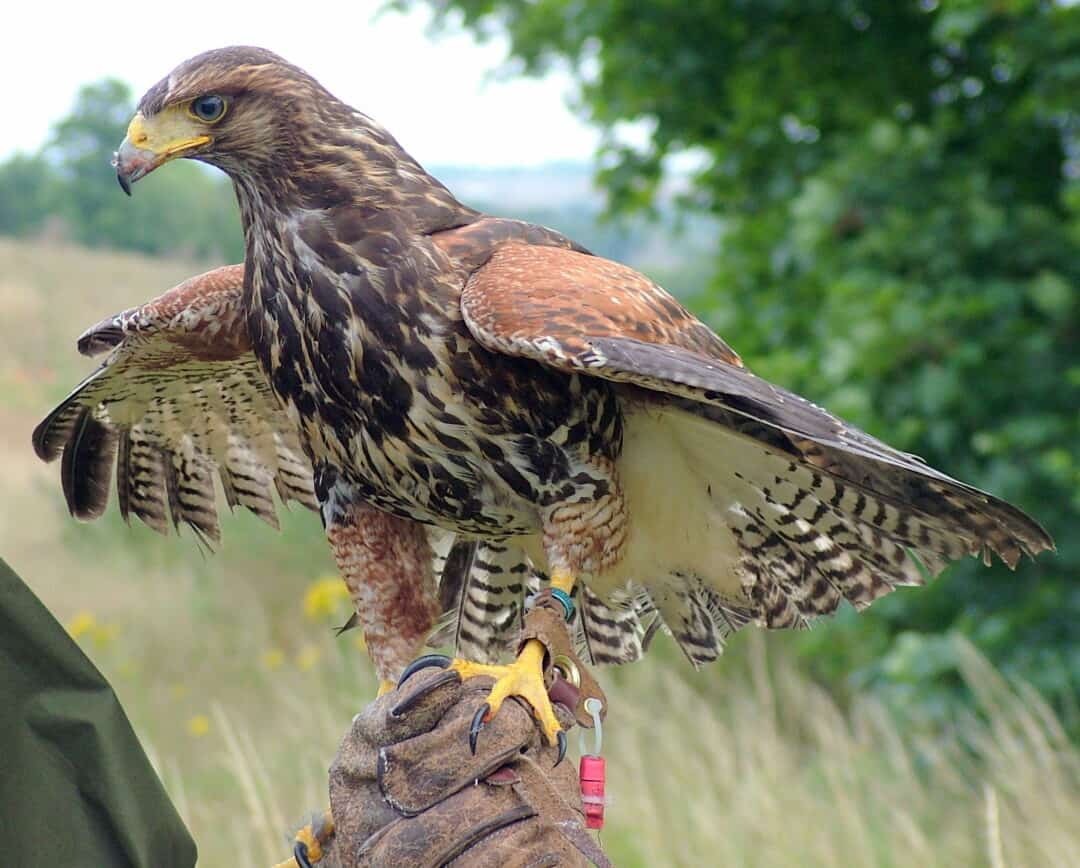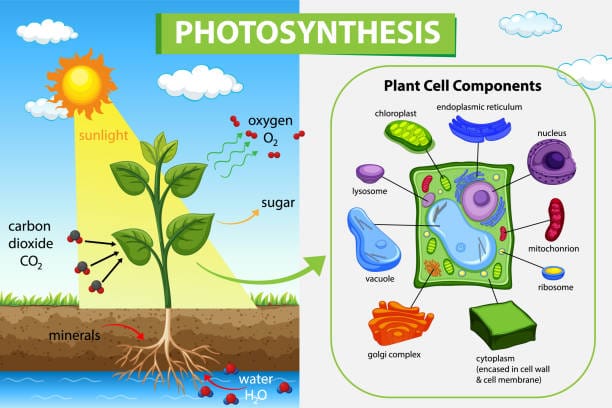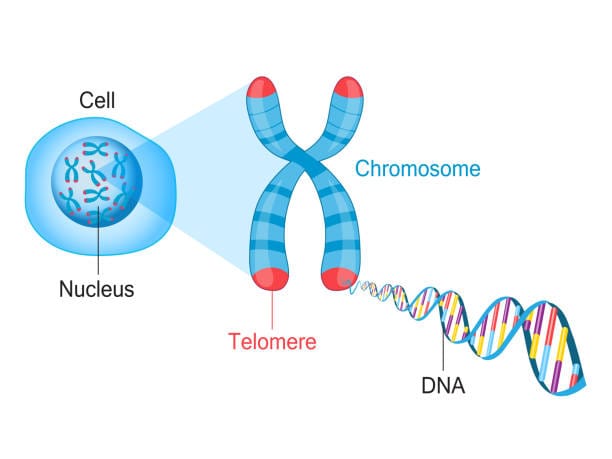High above open plains and rocky cliffs, a silent silhouette hovers in the sky. With broad wings outstretched, a golden eagle scans the landscape below. At first glance, nothing stirs. The grasses ripple gently in the wind, the land seems still. But to the eagle’s eyes—eyes that evolution has sculpted over millions of years—movement is everywhere. A faint shimmer betrays the twitch of a mouse’s whiskers. A ripple in shadow reveals the shifting tail of a lizard beneath a stone. For the eagle, this is not a static world. It is a rich tapestry of motion, light, and form. And all of it, even the tiniest detail, is visible from more than a mile away.
Birds of prey, or raptors, are among the most skilled visual hunters in the animal kingdom. Their astonishing eyesight has fascinated scientists, naturalists, and storytellers for centuries. But how do they do it? How do eagles, hawks, falcons, and owls spot their prey from such incredible distances—often long before the prey even senses danger?
The answer lies in the intricate blend of biological engineering and evolutionary pressure. Birds of prey have developed some of the most sophisticated visual systems ever known, combining raw acuity, color perception, motion detection, and three-dimensional depth awareness into a single, unified hunting tool. Their vision is not just better than ours—it is radically different, almost alien in its capabilities. To understand how birds of prey see the world is to enter a realm where biology pushes against the very limits of physical possibility.
Evolution’s Perfect Predator
The evolution of birds of prey is a testament to the power of natural selection. Long before humans refined lenses or telescopes, nature was crafting its own optical marvels. Raptors, particularly diurnal species like hawks and eagles, evolved in open habitats where prey animals had little cover. Survival depended on the ability to detect movement from vast distances, assess threats quickly, and strike with precision. Those with sharper vision thrived, reproducing and passing on their genes. Over millions of years, this arms race between predator and prey produced birds whose eyes became as crucial to their survival as wings or talons.
From a structural standpoint, raptors’ eyes are truly remarkable. Proportionally, their eyeballs are enormous—often taking up a larger percentage of the skull than in any other vertebrate. In fact, the eyes of some large raptors are nearly the same size as human eyes, despite the birds being only a fraction of our weight. These large eyes provide a wider aperture, allowing more light to enter, which is crucial for spotting faint movements or seeing in dim light.
But size is just the beginning. Birds of prey also have incredibly dense retinas—the light-sensitive tissue at the back of the eye where images are formed. The retina contains photoreceptor cells known as rods and cones. Rods are responsible for night vision and motion detection, while cones handle color and detail. Raptors can have over a million photoreceptors per square millimeter in parts of their retinas—more than five times the density found in humans. This allows them to resolve much finer detail, enabling a falcon to spot a pigeon mid-flight at several kilometers away, or a kestrel to detect the ultraviolet urine trails left by small mammals.
The Foveal Secret: A Tale of Two Focus Points
One of the most extraordinary features of a bird of prey’s eye is the presence of not just one, but two foveae—central regions of the retina responsible for sharpest vision. In humans, we have a single fovea in each eye, which is why we must point our gaze directly at what we wish to see clearly. Birds of prey, however, possess both a central and a temporal fovea. The central fovea points straight ahead, like our own, but the temporal fovea points sideways, giving them a secondary point of intense focus.
This dual-fovea system offers birds an extraordinary advantage. While flying forward, they can maintain sharp focus on the horizon with one fovea, and simultaneously lock onto a target off to the side with the other. In essence, they can zoom in on two parts of their visual field at once. This is particularly useful during flight, when a hawk might scan ahead for potential ambushes while simultaneously tracking a rodent scurrying through the grass below.
Additionally, raptors often exhibit binocular vision—the overlapping field of view from both eyes—that enhances depth perception. This allows them to judge distances with incredible precision, a vital skill when diving at high speeds or maneuvering through dense forests. A peregrine falcon, diving at over 240 miles per hour, needs to correct its angle within fractions of a second. Without keen depth perception, even a minor error could mean missing the target or crashing into the terrain.
Color Beyond Imagination
Another remarkable aspect of raptor vision is their capacity for color perception. While humans possess three types of cone cells in our retinas—sensitive to red, green, and blue light—most birds have four. This tetrachromatic vision grants them access to a spectrum of colors far beyond our own. The additional cone is sensitive to ultraviolet (UV) light, which humans cannot perceive at all.
This UV sensitivity isn’t just a fun evolutionary quirk. It has real-world hunting applications. Many small mammals, such as voles and shrews, mark their territory with urine and feces that reflect ultraviolet light. Though invisible to us, these markers stand out starkly against the background for a kestrel flying overhead. It’s as though the ground is lit up with neon signs, pointing directly to the location of potential prey.
Furthermore, this enhanced color perception allows birds of prey to distinguish subtle changes in vegetation. An animal hiding among leaves may disrupt the natural color patterns of the environment in ways imperceptible to humans but glaringly obvious to a raptor. Even differences in fur glossiness or feather sheen become distinguishable clues under the bird’s advanced visual system.
Motion: The Language of the Hunt
Raptors are not just watching for shape or color—they are attuned to motion at a level that borders on the supernatural. Their retinas are populated with an extraordinary number of ganglion cells connected to motion-detecting circuits. These allow them to detect even the faintest movement—like a field mouse twitching an ear or a grasshopper leaping between blades of grass.
This sensitivity to motion operates in tandem with a rapid flicker fusion rate, which refers to how quickly visual information is updated. Humans can process about 60 frames per second; birds of prey can process well over 100. This means that time, from their perspective, seems to slow down. A fleeing rabbit doesn’t blur past; instead, its movements are dissected into fine increments, each one trackable and interpretable in real time.
This ability is especially critical during high-speed pursuits. A peregrine falcon in a stoop must navigate wind resistance, air turbulence, and target evasion—all while adjusting its trajectory mid-dive. To us, the world may seem a blur at those speeds. But to the falcon, it is crystal clear.
Stabilization: Keeping a Steady Gaze
Another remarkable adaptation in birds of prey is their head stabilization mechanism. When raptors fly or perch, their heads remain astonishingly still, even when their bodies are moving. This is achieved through a combination of neurological control and specialized neck muscles that counteract motion.
This stabilization is crucial for hunting. A bouncing or shifting image would blur out fine detail and make it nearly impossible to detect subtle movements. By keeping their gaze locked and steady, raptors ensure their high-acuity vision is always functioning at peak performance. It’s the equivalent of an inbuilt gimbal system—far superior to anything man-made.
In flight, especially during hovering or gliding, this stabilization is enhanced by constant adjustments to wing angle and body posture. The effect is almost eerie: a kestrel floating in midair with its head perfectly still, its eyes scanning the grasslands below as if mounted on a tripod.
Night Vision and the Silent Watchers
Not all raptors hunt by daylight. Owls, the enigmatic nocturnal cousins of hawks and falcons, are masters of the night sky. Their eyes are shaped differently—more tubular than spherical—allowing for a larger retina and more rods, which are better suited for low-light vision.
Owls trade some color vision and detail for extraordinary sensitivity to light. Their eyes can collect and process light several times more efficiently than human eyes, enabling them to detect movement in near-total darkness. In addition, their facial discs—arrangements of feathers around their eyes—act like radar dishes, funneling sound directly toward their ears and giving them spatial awareness in multiple dimensions.
Though they don’t spot prey from miles away like an eagle might, owls detect the barely audible rustle of a mouse beneath snow or leaves and strike with deadly precision. Their silent flight, enabled by specialized feathers that muffle wing noise, makes them even more ghostlike—predators that no creature hears coming.
Intelligence and Visual Memory
Beyond the mechanics of vision, birds of prey also demonstrate high levels of cognitive ability. Their brains integrate complex visual input into actionable behavior, a process that involves memory, pattern recognition, and decision-making. A hawk that fails a dive learns from the experience, refining its approach in future hunts. Eagles that hunt in groups communicate through subtle body language and vocalizations, coordinating their attacks like seasoned tacticians.
Many raptors are also capable of long-term visual memory. They remember locations where prey is abundant or where obstacles lie. Migratory species such as the osprey can navigate thousands of kilometers back to a favorite fishing spot, often pinpointing the exact tree or rock they visited the year before. Their eyes not only see the world—they map it, remember it, and anticipate its changes.
Vision at the Edge of Physics
What makes the vision of birds of prey so extraordinary is not merely the enhancement of human traits but their divergence into an almost separate sensory domain. These birds operate at the edge of what physics and biology allow. Their optical systems push the boundaries of light perception, motion analysis, and neural integration.
The insights gained from studying raptor vision have not only expanded our understanding of animal behavior but also inspired human innovation. Engineers study the structure of their eyes to design better cameras. Roboticists emulate their tracking mechanisms in drones and aerial surveillance systems. Even medical science benefits, as researchers look to the retinas of raptors to understand vision disorders and develop treatments for macular degeneration.
The Eternal Watchers
There is something deeply humbling in knowing that above our towns, fields, and forests, creatures exist whose perception of the world is far richer and more detailed than ours. Birds of prey are not just hunters; they are aerial philosophers, reading a language of light and motion we can scarcely imagine.
In the gaze of a hawk circling high above, there is the accumulated wisdom of millions of years of evolution—a silent testament to nature’s relentless drive for excellence. They see us not as we see ourselves, but as patterns of heat and color, motion and stillness. And from their vantage point, the world is far more vivid, far more alive, than we will ever know.
These are the watchers in the sky—the raptors, the hunters, the eyes that never blink. And long after we have put away our telescopes and turned off our cameras, they will still be there, riding the wind, scanning the earth, seeing everything.






